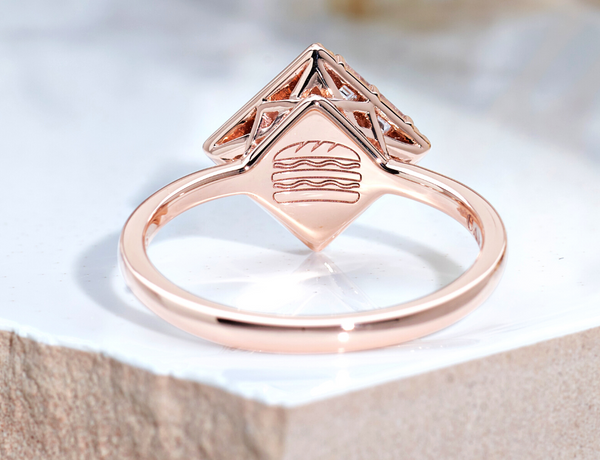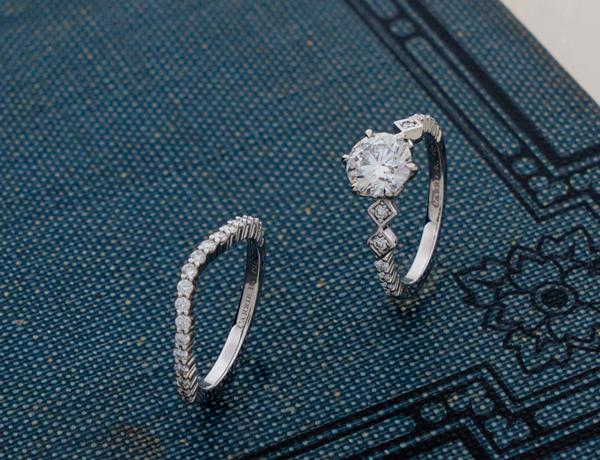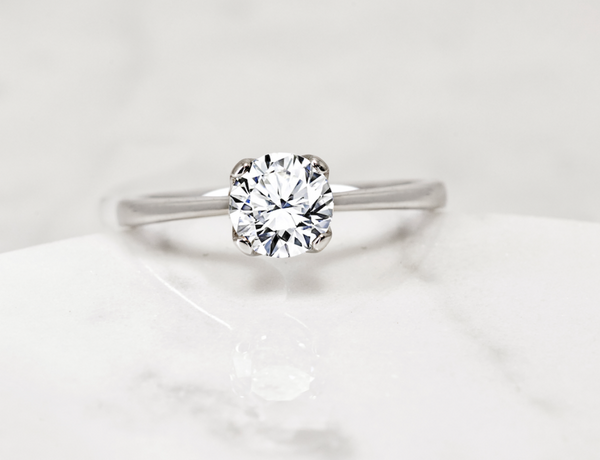Curious about lab grown diamonds and what they are?
If you’re wondering why these cultured stones are called sustainable diamonds and whether or not you should consider them, you’re on the right page. Here we’ll explain what they are and how they compare to natural diamonds.
- How natural diamonds are formed and harvested
- What are lab grown diamonds?
- How are lab grown diamonds made?
- Why lab grown diamonds are becoming popular
- Comparing natural vs. lab grown diamonds
- Should you buy lab grown diamonds
How are natural diamonds formed and harvested?
Natural diamonds are formed through certain conditions when heat and pressure causes carbon atoms to crystallise.
According to the Gemological Institute of America (GIA), it takes one million part rocks for one part diamond. This gives you an idea of why there are so few natural diamonds.
Because there’s so much more rock than diamond, even recovering diamonds from the earth is labour-intensive. Kimberlite, an igneous rock which sometimes contains diamonds, must be processed to recover naturally occurring gems.
It’s also worth noting that natural diamonds are obtained through non-ecological mining techniques. These include marine, open-pit or alluvial mining. Such techniques involve things like deep drilling into the seabed and digging miles beneath the Earth’s surface.
These activities can affect the quality of water and health of aquatic life. In recent years, consumers have actually become increasingly aware of how natural diamonds are mined and have begun to question the ethics behind it.
What are Lab Grown Diamonds
Lab grown diamonds, also known as cultured diamonds or sustainable diamonds, are fundamentally the same as natural diamonds.
These cultured diamonds are real diamonds, in other words.
The difference is that they are cultivated under a controlled environment. Their chemical composition and physical characteristics (such as hardness and sparkle) are exactly the same as natural diamonds’.
Contrary to popular belief, they are not inferior to naturally mined diamonds. Nor are they diamond simulants - simulants are stones that merely imitate the appearance of diamonds.
#1 Fast Fact
Diamond simulants are not the same as cultured diamonds and do not have the same chemical and physical properties as diamonds. Examples of diamond simulants include cubic zirconia, lab-grown moissanites and rhinestones.
#2 Fast Fact
Natural diamonds have some resale value. Lab grown diamonds, especially the nicer ones, can have some resale value too, though it tends to be much lower.
How are lab grown diamonds created?
There are two ways to grow a diamond in a lab:
Why are lab grown diamonds rising in popularity?
These diamonds are a sustainable, ethical alternative to natural mined diamonds and have a lower carbon footprint.
According to a Forbes article in 2018, 70% of millennials are willing to consider a cultured diamond engagement ring. This shows that they are becoming more conscious of the impact of their buying decisions.
Therefore, these consumers would rather purchase goods that do not bring about any adverse effects on the environment.
Another appealing factor is the competitive pricing. Lab diamonds are generally priced lower than natural diamonds. In fact, they can be 40% to 50% cheaper than a comparable naturally-mined diamond.
In a nutshell...
These are the main differences between lab grown and natural diamonds.
|
Lab grown Diamonds
|
Natural Diamonds
|
It is important to note that one would not be able to distinguish between lab grown and natural diamonds with the naked eye.
The only way to ascertain whether a diamond is cultured or natural is to have the diamond undergo tests by internationally recognised gem testing labs like GIA or IGI.
Should you buy a lab grown diamond?
If you’re in the market for a diamond engagement ring that is environmentally-conscious and comparatively more affordable, a lab grown diamond may be a suitable choice for you.
However, the deciding factor still lies in your personal preference.
There is no right or wrong in choosing either a lab grown or natural diamond. At the end of the day, a ring is a symbolism of love and commitment that should not be tied to a hefty price tag by default.
Remember: it’s the thought and meaning behind the ring that matters most, not the numbers on the receipt after purchase.
Lab Grown Diamond Options at Carrie K.
We offer lab grown diamonds for all our designs. Simply book an appointment to have a chat with our Jewellery Consultants!
Want to create your DREAM ring, but don't know where to start?
✔️ Get step-by-step guidance from our GIA-certified gemologist and award-winning designers
✔️ Access the widest selection of ring designs and IGI or GIA-certified Diamonds
✔️ Get peace of mind with our 14 years of experience in jewellery design with outstanding after-service









